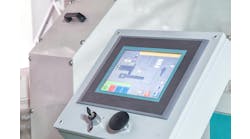Red, yellow, green and blue are standard stacklight colors. But a variety of other colors can be used to indicate specific conditions and needs.
Aside from an e-stop button, what other buttons, alarms, stacklights or switches can be used to improve the safety of an operating machine?
Carter Williams, product manager, Siemens: There are several products that can be used to improve safety of an operating machine. First, stacklights, aka signal columns, are used in any application that requires visual or audio signaling to inform workers and/or visitors of their environmental conditions. The signaling can be used to monitor process control of their machinery by letting them know when a machine is running, turned off or down for maintenance; to provide plant safety information to workers by letting them know when it is safe to enter a restricted area or not; to provide an emergency evacuation notice to the plant area—strobe lights and sirens/buzzers are often used together.
Second, a switch could be used to turn the application off and on, such as an HOA switch. An advanced application using a switch would incorporate a keyed switch that would only allow authorized personnel to access and control the machine; an RFID-keyed switch that provides authorized keyed control access to a machine by job levels to provide not only a measure of security/safety, but also provide overall equipment effectiveness (OEE).
For example, the operator is given a color-coded key that allows for the machine to be turned on and off. Maintenance personnel are given another color-coded key that provides another level of access, and finally the supervisor is given a key that allows complete access.
In addition, the RFID switch provides controlled access if it is connected over the customer’s network and it can provide information about the machine’s productivity. Further analysis of this data can become a gateway of information to increase productivity.

















